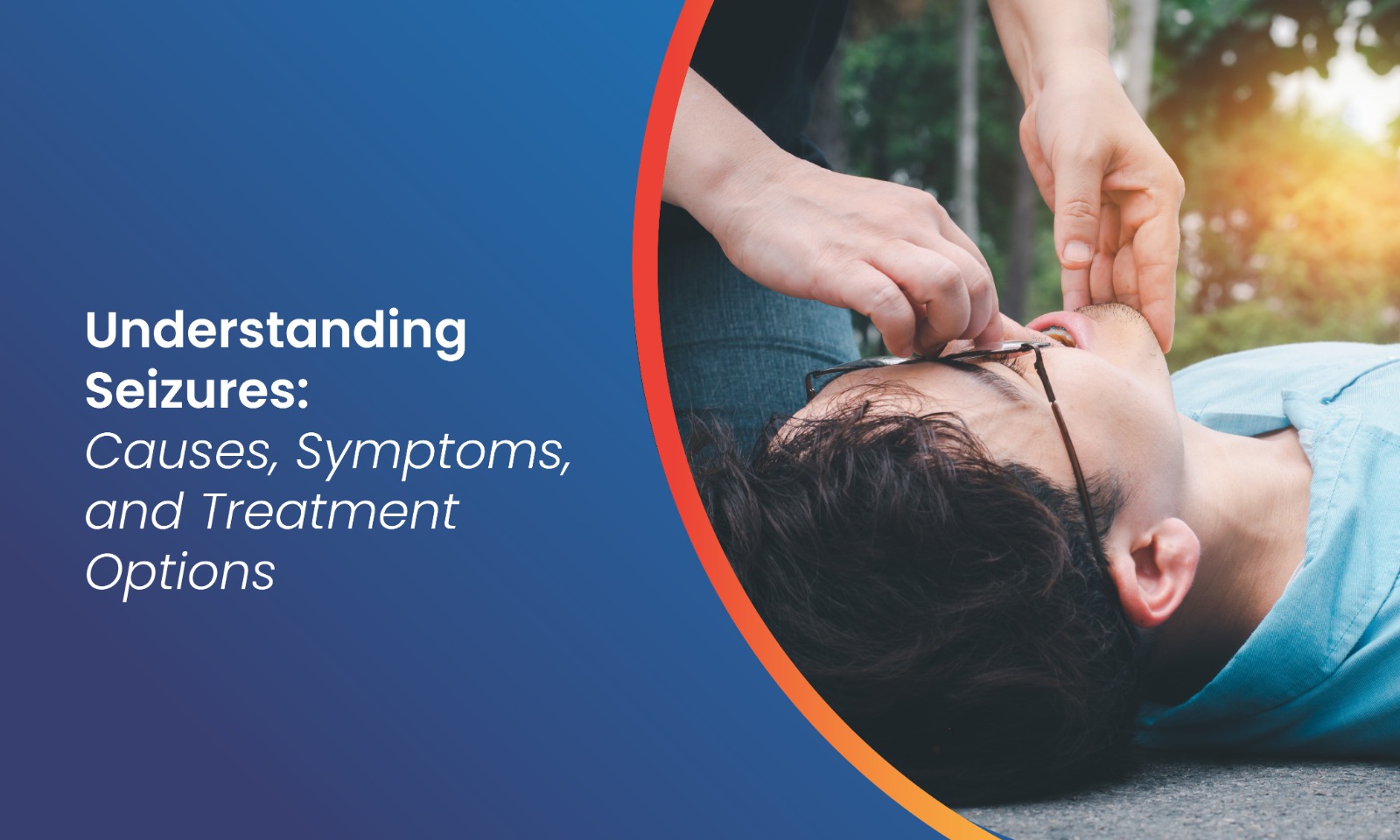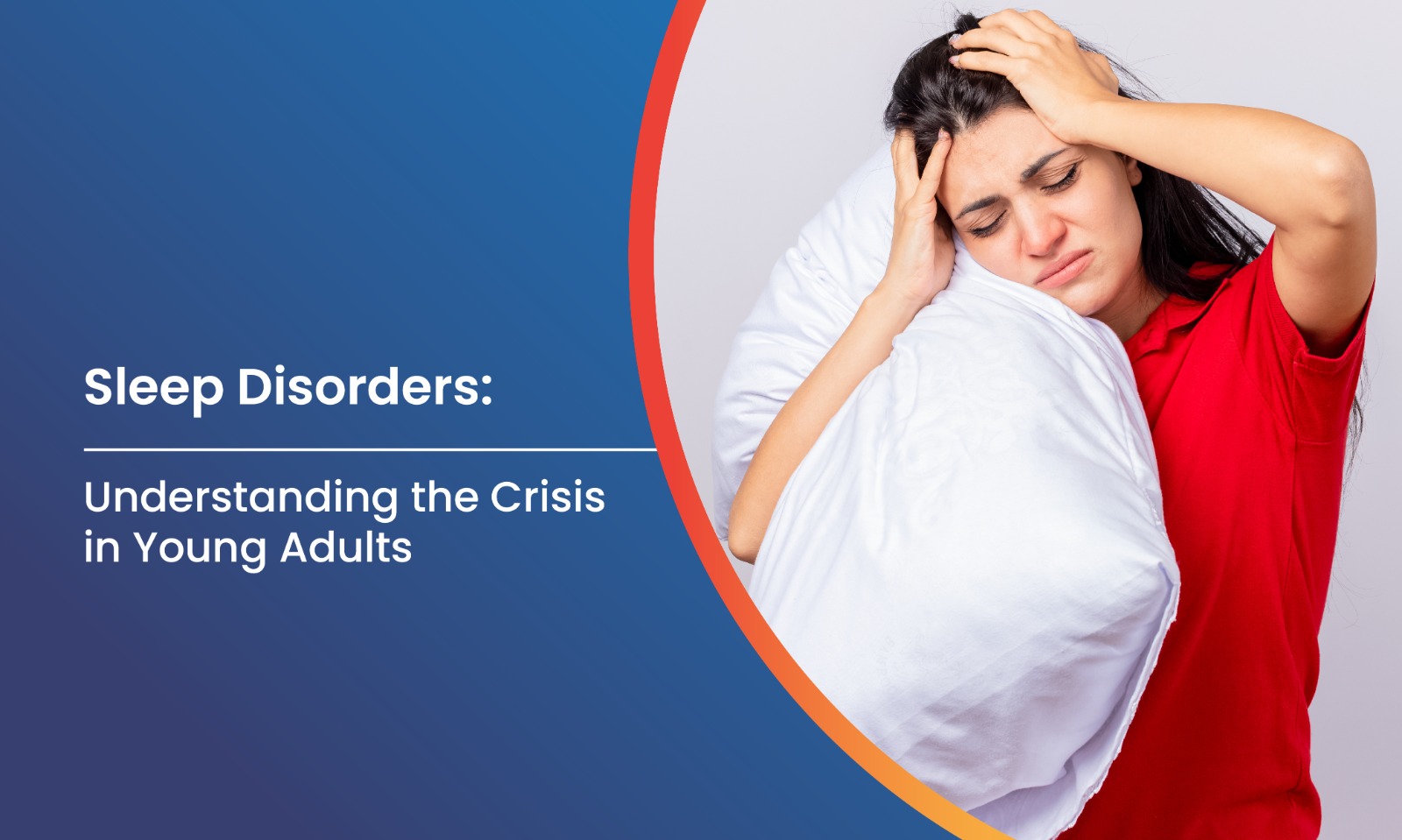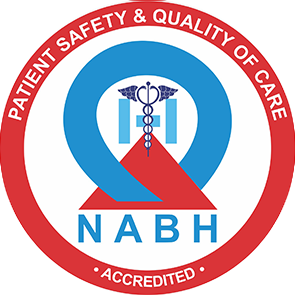Understanding Seizures: Causes, Symptoms, and Treatment Options

Seizures are sudden, uncontrolled electrical disturbances in the brain affecting behaviour and consciousness. They can cause muscle contractions, loss of awareness, or unusual sensations. Understanding seizures helps in proper management and timely intervention.
While some seizures are short-term and harmless, others require immediate medical attention. Various factors, like epilepsy, injuries, or illnesses, can trigger seizure activity. Early recognition and treatment can significantly improve the quality of life for individuals affected by this condition.
Table of Contents
- What Are Seizures?
- Types of Seizures
- Common Causes of Seizures
- Recognising Seizure Symptoms
- Diagnosing Seizures
- Emergency First Aid for Seizures
- Medical Treatments for Seizures
- Lifestyle Management for Epilepsy
- Preventing Seizures
- When to Seek Medical Help
- FAQs About Seizures
What Are Seizures?
A seizure occurs when there is a sudden surge of abnormal electrical activity in the brain. This can lead to a wide range of symptoms, from subtle sensory disturbances to dramatic shaking and loss of consciousness. Seizures are not a disease themselves, but rather a symptom of an underlying neurological or medical condition.
- Brain Activity: A Sudden surge of electrical impulses disrupts normal function
- Duration: Typically lasts 30 seconds to 2 minutes
- Aftereffects: Confusion or fatigue often follows seizure episodes
- Frequency: Some people experience single episodes, others have recurrent seizures
- Variability: Symptoms range from mild staring spells to violent convulsions
Types of Seizures
Seizures are classified into several types, primarily based on where they begin in the brain and how they affect the body and consciousness. Generalised seizures affect both sides of the brain and often cause loss of consciousness, while focal seizures start in one area and may or may not impair awareness. Understanding the different types helps guide diagnosis and treatment.
Focal Seizures
- Begin in one area of the brain
- May cause altered emotions or unusual sensations
- Can progress to generalised seizures
- Subtypes include aware and impaired awareness seizures
- Sometimes mistaken for mental health conditions
Generalized Seizures
- Affect both brain hemispheres simultaneously
- Include absence (petit mal) and tonic-clonic (grand mal)
- Cause loss of consciousness and muscle control
- Myoclonic seizures involve sudden jerking movements
- Atonic seizures result in sudden loss of muscle tone
Common Causes of Seizures
Seizures can be triggered by a variety of factors, including neurological disorders, injuries, infections, and metabolic imbalances. Epilepsy is the most well-known cause, but seizures can also result from head injuries, brain infections, strokes, tumours, and genetic conditions. Certain medications, recreational drugs, and withdrawal from substances can also lower the seizure threshold and provoke episodes.
- Epilepsy: Chronic neurological disorder causing recurrent seizures
- Head Trauma: Brain injuries from accidents or falls
- Stroke: Interrupted blood flow to brain tissue
- Infections: Meningitis, encephalitis, or brain abscesses
- Genetic Factors: Inherited conditions affecting brain function
- Metabolic Imbalances: Low blood sugar, sodium, or calcium
- Substance Withdrawal: Alcohol or drug dependency cessation
Recognizing Seizure Symptoms
Symptoms of seizures vary depending on the type and area of the brain affected, but common signs include convulsions, staring spells, and loss of consciousness. Some people experience sensory changes, such as tingling, déjà vu, or hallucinations, while others may have repetitive movements or temporary confusion.
Recognising these symptoms is essential for providing appropriate care and seeking medical help.
- Physical Signs: Jerking movements, stiffening, or collapsing
- Sensory Changes: Strange tastes, smells, or visual disturbances
- Cognitive Effects: Confusion, memory gaps, or speech difficulties
- Autonomic Symptoms: Rapid pulse, sweating, or pupil dilation
- Emotional Shifts: Sudden fear, anxiety, or déjà vu sensations
- Loss of Consciousness: Complete or partial unresponsiveness
Diagnosing Seizures
Diagnosing seizures involves a thorough medical history, physical examination, and specialized tests to identify the underlying cause. Neurologists may use electroencephalograms (EEG), brain imaging (MRI or CT scans), and blood tests to assess brain function and rule out other conditions. Accurate diagnosis is crucial for determining the most effective treatment and management plan.
- Medical History: Detailed account of seizure episodes
- Neurological Exam: Testing reflexes, coordination, and senses
- EEG (Electroencephalogram): Records the brain's electrical activity
- Brain Imaging: MRI or CT scans to identify abnormalities
- Blood Tests: Check for infections or metabolic issues
- Lumbar Puncture: Analyzes cerebrospinal fluid if needed
Emergency First Aid for Seizures
Proper response during a seizure is crucial for preventing injuries and complications. Witnessing a seizure can be frightening, but staying calm and following these steps can make a significant difference:
- Stay Calm and Time the Seizure: Most seizures last 1-2 minutes. If it continues beyond 5 minutes, call emergency services immediately.
- Protect the Head: Gently cushion the person's head with a soft item like a folded jacket or pillow to prevent head injuries from convulsions.
- Clear the Surrounding Area: Remove sharp objects, furniture, or anything that could cause injury during uncontrolled movements.
- Do Not Restrain Movements: Attempting to hold the person down can cause muscle strains or fractures. Allow the seizure to run its course naturally.
- Position Safely on Their Side: Once convulsions stop, gently roll them onto their side (recovery position) to keep airways clear and prevent choking.
Never Insert Objects in Mouth: Contrary to myth, you cannot swallow your tongue during a seizure. Forcing objects into the mouth may cause dental injuries or block airways.
Lifestyle Management for Epilepsy
Comprehensive seizure control extends beyond medications to daily habits and environmental modifications:
Medication Management
- Consistent Timing: Take medications at same times daily to maintain stable blood levels
- Dose Tracking: Use pill organizers or smartphone reminders
- Refill Planning: Never run out of prescriptions
- Side Effect Monitoring: Report any cognitive changes, rashes, or mood alterations
Sleep Optimization
- Maintain consistent sleep-wake schedule (even weekends)
- Create relaxing bedtime routine (no screens 1 hour before bed)
- Treat underlying sleep disorders (sleep apnea increases seizure risk)
- Avoid sudden changes in sleep patterns
Stress Reduction Techniques
- Practice daily mindfulness meditation (20-30 minutes)
- Learn biofeedback methods to control physiological responses
- Engage in regular moderate exercise (yoga, swimming, walking)
- Consider cognitive behavioral therapy for anxiety management
Trigger Avoidance
- Flashing lights (photosensitive epilepsy)
- Alcohol consumption
- Missed meals/low blood sugar
- Specific visual patterns
- Hormonal changes in women
Preventing Seizures
While not all seizures are preventable, these proactive measures can significantly reduce risks:
Primary Prevention
Head Injury Prevention:
- Proper helmet use for cycling, contact sports
- Fall prevention strategies for elderly
- Seatbelt use and defensive driving
Prenatal/Neonatal Care:
- Adequate maternal nutrition and prenatal vitamins
- Avoiding teratogens during pregnancy
- Proper management of birth complications
Secondary Prevention
Infection Control:
- Complete vaccination schedule (especially for meningitis)
- Prompt treatment of fevers in children
- Safe food handling to prevent parasitic infections
Chronic Disease Management:
- Tight blood sugar control for diabetics
- Blood pressure management
- Regular cardiac evaluations
Tertiary Prevention
- Medication Adherence: Strict compliance with prescribed regimens
- Trigger Management: Personalized avoidance of identified triggers
- Regular Follow-ups: Neurological check-ups to adjust treatment plans
- Comorbidity Treatment: Addressing depression/anxiety that may worsen control
When to Seek Medical Help
Recognising emergency situations can prevent life-threatening complications:
Immediate Emergency Situations
- Status Epilepticus: Seizure lasting >5 minutes or recurrent seizures without regaining consciousness
- Breathing Difficulties: Cyanosis (bluish discolouration) or apnea lasting >30 seconds
- Severe Injury: Head trauma with loss of consciousness or bleeding
- Pregnancy Complications: Any seizure in pregnant woman requires urgent evaluation
- Water Inhalation: Seizures occurring in water with potential drowning risk
Urgent Medical Evaluation Needed
- First Unprovoked Seizure: Requires neurological workup to determine cause
- Change in Seizure Pattern: Increased frequency, duration, or new symptoms
- Postictal Paralysis: Weakness lasting >30 minutes after seizure (Todd's paralysis)
- Medication Failure: Breakthrough seizures despite compliance
- Systemic Symptoms: High fever accompanying seizures
Routine Follow-Up Indicators
- Annual neurological exams for stable epilepsy
- Medication level checks as directed
- Before making major treatment changes
- When considering pregnancy (preconception counselling)
- After significant lifestyle or health status changes
Seizures are a complex neurological condition with various causes and appearances. Understanding the different types helps in an appropriate response and treatment. While epilepsy is a common cause, many other factors can trigger seizure activity.
Modern medicine offers effective treatments ranging from medications to advanced surgical options. Lifestyle modifications and preventive measures play crucial roles in management. With proper care, most individuals with seizure disorders can lead fulfilling lives. Always consult doctors for personalised diagnosis and treatment plans.
Frequently Asked Questions (FAQ)
Q1. What are the most common causes of seizures?
Epilepsy, head injuries, brain infections, strokes, brain tumours, and metabolic imbalances are among the most common causes of seizures.
Q2. What should I do if someone is having a seizure?
Stay calm, protect the person from injury, do not restrain them, and time the seizure. Call emergency services if it lasts more than five minutes.
Q3. Are all seizures caused by epilepsy?
No, seizures can be caused by many factors, including fever, metabolic disorders, head injuries, and certain medications, not just epilepsy.
Q4. How are seizures diagnosed?
Diagnosis involves a medical history, neurological exam, EEG, brain imaging, and blood tests to identify the cause and type of seizure.
Q5. What treatments are available for seizures?
Treatments include anti-seizure medications, dietary therapy, nerve stimulation devices, and surgery for those not controlled by medication.
Q6. Can seizures be prevented?
While not all seizures can be prevented, avoiding triggers, taking prescribed medications, and maintaining a healthy lifestyle can reduce the risk.















